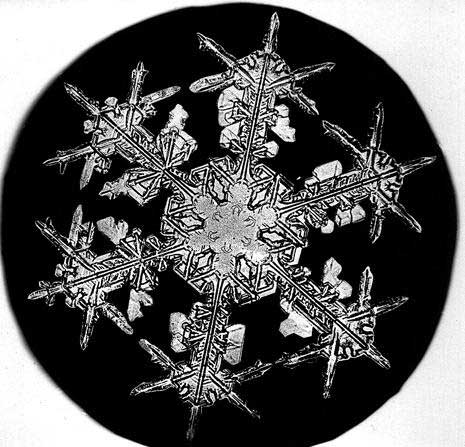Snowflake Science

Photograph by Winston Bentley of a snowflake
As winter storms rage through the United States and other parts of the world, many faces are pressed up against the windows of their home admiring the white flakes that look like tiny pieces of torn up paper as they float toward the ground, covering people’s yards with a cottony white blanket that stretches on for miles in every direction. Just like a blanket is woven out of tiny fibers, snow is made up of tiny snowflakes, shaped in the most intricate crystal structures. How do these crystals form and what kind of shapes can they take?
In the air there is water vapor. Water vapor is just a fancy term for saying that tiny particles of water, consisting of two hydrogen atoms and one oxygen atom, are further apart than when they are part of liquid water or solid water (AKA ice). When the air cools these particles start to condense or get closer together, until they form tiny drops of liquid water. When the temperature becomes 32 degrees Fahrenheit (32 degrees Celsius) the water drops freeze, forming snow crystals. Snowflakes can consist of 2 or hundreds of snow crystals bonded together through hydrogen bonds, the same bonds that are responsible for surface tension of water that make it look like there is a bubble on the top of a really full glass of water. Because of these bonds the snow crystals typically take on a symmetrical and repeating hexagonal, six-sided, pattern; however, there are other shapes that the snow crystals can form. No matter what, the shapes will always be symmetrical, meaning that if you were to cut the snowflake in half, one side would look like a mirror image of the other side. Each crystal can be a little different due to the amount of water vapor and the air temperature around the crystal. This is explains why no two snowflakes look the same.
For more information:











